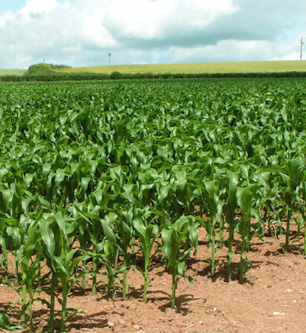Nitrates / Nitrites
| EPA Maximum Contaminant Level (MCL) |
Nitrate | 10 mg/L |
| Nitrite | 1 mg/L |

Nitrates and nitrites are nitrogen-oxygen chemical units that combine with various organic and inorganic compounds. When taken into the body, nitrates—stable ions commonly used as a fertilizer—are converted to nitrites—unstable ions that quickly react with other compounds.
Occurrence of Nitrates
Nitrates occur naturally in water at low levels. Plants use them as a nutrient.
They occur in high levels when microorganisms break down fertilizers, in animal waste, waste-water or septic seepage, in urban drainage or decaying plants. Due to agricultural runoff or animal feedlots, rural waters may be high in nitrates.
Chloramination may also be a source. According to the World Health Organization:
Chloramination may give rise to the formation of nitrite within the distribution system if the formation of chloramine is not sufficiently controlled. The formation of nitrite is as a consequence of microbial activity and may be intermittent.
Health Effects of Nitrates
Most nitrates consumed by humans come from dietary raw or cooked vegetables, with few known health effects.
Water high in nitrates can cause methemoglobinemia, or “blue baby syndrome,” as the ingested nitrates are converted to nitrites in the body. This reduces the oxygen-carrying capacity of the blood, and severe cases result in brain damage or death.
Prolonged intake of high nitrates can result in gastric distress in humans and has been shown to cause cancer in test animals.
Water Treatment for Nitrates
The EPA recommends ion exchange, reverse osmosis or electrodialysis. Distillation and blending (dilution) are also treatment options.
Sources: EPA - Nitrate, EPA - Nitrite, Water Technology Magazine, Volume 31, Issue 5 - May 2008.; World Health Organization, WHO (2), Photo:WikiMedia, author: Rob Purvis
Site Index
Filtration Systems
- Aeration for Iron & Sulfide
- Backwashing Filters
(whole house & well units)
- Chlorine & Chemical Injectors
- Countertop Water Filters
- Garden Hose Filters
- Reverse Osmosis, Residential
- Reverse Osmosis, Commercial
- Shower Filters
- Specialty Filters
- Ultraviolet Systems
- Undersink Filters
- Water Softeners
- Whole House Filters
Cartridges
Parts
- Replacement Parts
- Faucets
- Filter Media
- Fittings
- Housings
- O-rings
- Pumps
- Pura UV
- R.O. Parts
- R.O. Tanks
- R.O. Booster Pump
- VIQUA UV